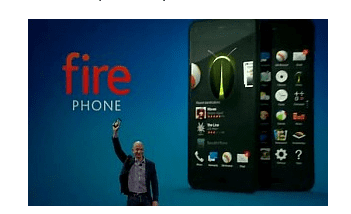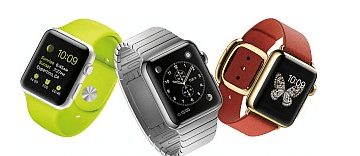A review of the biggest digital marketing events of 2014
It’s time for us to start writing the history of 2014. This has been a year with its share of growing pains from deploying digital technologies, but also with some remarkable new opportunities emerging from the technologies that connect users to their physical environment and to the human networks that they value.
Here is a month by month description of a year that we all helped to shape and one that provides a lot of lessons to take with us into 2015.
January
The ‘internet of things’ came knocking on people’s doors early in the year. On January 13 Google purchased Nest, the makers of very smart home thermostats and smoke/carbon monoxide detectors.
 Under normal circumstances these might not be considered the sexiest of accessories but Nest’s CEO Tony Fadell had honed his design skills creating iPods and iPhones, so Nest/Google suddenly became an intriguing node in the connected world.
Under normal circumstances these might not be considered the sexiest of accessories but Nest’s CEO Tony Fadell had honed his design skills creating iPods and iPhones, so Nest/Google suddenly became an intriguing node in the connected world.
A home equipped with Nest devices (which include motion detectors) and Google Chromecast could not only tell Google when someone was home and what they were watching, but which content they skipped for bathroom breaks. Just add an Android phone to the mix and there won’t be much that you could do -- anywhere -- without giving Google a new idea for serving up the perfect advertisement.
February
Facebook had already demonstrated an insatiable addiction for growth in its user base, and on February 19th we found out just how expensive the habit had become. WhatsApp had 450 million monthly users and Facebook had $16 billion dollars, and so an exchange occurred. These weren’t just any 450 million users, however.
WhatsApp had become a popular; inexpensive alternative to SMS messaging but SMS is frequently free in American plans. WhatsApp was a step towards global dominance and it became an early sign that Facebook was looking to grow its user base through a suite of standalone apps that didn’t necessarily brandish the Facebook logo.
March
Facebook came up with another $2 billion in loose change to purchase a new reality for their users. The Oculus Rift virtual reality headset was not yet on the market but Facebook apparently viewed it as an important part of the post mobile social world. 
A post on Mark Zuckerberg’s Facebook page said that immersive gaming would be their first stop in virtual reality and other social opportunities would soon come into view, such as ‘enjoying a court side seat at a game’. While others might still be squinting at 5 inch mobile screens, Facebook was planning to offer front row seats at the game for connected friends all over the world.
April
Twitter had gone public in late 2013 and spent much of 2014 trying to prove their worth because of some uncertainty about the nature of its user base and its growth prospects. On April 15th they purchased social data aggregator Gnip to better understand their audience and perhaps plan ahead for a day when they could sell social data in addition to advertising.
In December Apple had made a similar move when they purchased Topsy. Social media had become the message and a product unto itself with intrinsic value to marketers. Keeping track of the traffic patterns and selling them to interested parties could provide real value, hopefully getting a message across to the investment community.
May
Google’s efforts to avoid ‘thin content’ and ‘content farms’ in its rankings had become increasingly stealthy over time but they did make a public announcement about it [] on May 20th. The Panda 4.0 release attempted to help out small businesses that were probably never trying to game the system but may have been punished by Panda anyway. The new Panda would promise a second chance to get them back up the rankings.
June
With online selling becoming increasingly mobile, Amazon took what seemed to be a logical step on June 18 when it announced a phone that was designed from scratch to facilitate commerce.
The Fire Phone does has some novel technology including four forward facing, infrared capable head tracking cameras that support Amazon's version of 3D called Dynamic Perspective, but the phone’s raison d'etre is Firefly, a dedicated button that will tell the user what the phone’s camera lens is pointed at along with possible advice as to how it can be purchased on Amazon. Smart buyers seemed to balk at the deal however.
The phone is Android based but requires specialized challenges for app developers and, worst of all, it was priced at market rates without any subsidy for its impressive salesmanship skills. At year’s end the Fire Phone has still not caught on, even at a new price of 99 cents.
July
2014’s Summer belonged to Instagram. ComScore reported that it was now the 8th most popular app among users 18+, (Facebook Messenger ranked 9th and Twitter 13th). A Piper Jaffray study from April had already shown that Instagram was number one with teenagers. Ikea (in Russia) became the first brand to furnish a virtual web site entirely within Instagram, building upon the popularity of Instagram hashtags to allow users to navigate towards the furniture they needed.
August
The ‘Like’ was the earliest metric in Facebook marketing and it has been one of the most coveted in all of social media. Time and some questionable marketing tactics, however, had devalued the Like to the point where marketers didn’t really understand its value anymore.
In August Facebook took the first in a series of steps to support the 'Like' when it announced a policy change banning ‘like gating’. Facebook Page admins would no longer be able to require a user to Like their page in return for some incentive. Some marketers bemoaned the loss of a favorite tool but most were happy to be left with Likes that matter. The more pragmatic moved on to ‘action gating’, where incentives were offered for actions more powerful than a 'Like', for example, providing an email address.
September
Apple did not invent the laptop computer, the MP3 player, the mobile phone or the tablet. It just made them cool and desirable. That’s why everyone took notice in September when Apple got into wearable technology with the Apple Watch . Apple’s first entirely new product in four years will not carry the ‘i’ designation that had identified the Steve Jobs era.
The Apple Watch will have intuitive controls, including an expanded role for the ‘crown’ that was used to wind and set the time on traditional watches. It will communicate with iPhones 5+ and with its wearer via subliminal wrist tapping. The timing of the September announcement was a bit unusual since the watch won’t hit the market until 2015, but apparently Apple wants to give the developer ecosystem plenty of time.
October
Social media and email were both ‘reinvented’ in October. Ello emerged as a new type of social network that didn’t try to invite advertisers to a gluttonous data feast. Ello founder Paul Budnitz told Venture Beat that 'We don’t really consider Facebook to be a social network. We consider it an advertising platform because their real customers are the advertisers'.
The ‘un-Facebook’ positioning aside, Ello didn’t have much to offer users right away. It in’t slick or user friendly and its search functions are subpar. It also lacks a clear plan to sustain itself financially. If it can come up with a killer app to go with its privacy strengths, however, it could still make waves in 2015.
Speaking of waves [https://support.google.com/answer/1083134?hl=en], Google was coming up with yet another version of email 2.0 called Inbox. Invitation only and in high demand, Inbox attempts to aggregate emails into manageable to-do lists called ‘Bundles’. To do this, of course, it has to first ‘read’ the emails and, most likely, start thinking about the advertisements that the end user would most like to see.
November
Twitter was more than 8 years old as 2014 started drawing to a close, and its user growth appeared stagnant and seemingly hindered by a 140 character world of unfiltered, often cryptic messages. On November 12, Twitter management crafted a 7 ½ hour presentation around a 219 character mission statement explaining how things would look different going forward.
The value of Twitter, management explained, was a lot more than what could be seen in its newsfeed. They planned to build upon their 284 million logged in users with the 500 million who are not logged in but are directed to Twitter via a link or bookmark. Lastly, they pointed to a 'syndicated' 185 billion quarterly impressions that are served via embedded Tweets on 3rd party sites and apps.
Twitter was so intent on improving the user experience that it was willing to make some concessions to its founding, unfiltered legacy. They announced plans to create a ‘while you were away’ feature that algorithmically determined how much of the firehose that you just missed might actually interest you. Meanwhile, it attempted to boost its overall presence by improving SEO through a redesign of its #hashtag pages.
December
Facebook spent the first half of December cleaning up some loose ends. They had never been able to purchase Snapchat and so in June they launched a competitive ephemeral app called Slingshot, which was not as easy to use, never caught on with consumers and didn’t seem designed to meet Facebook’s objectives. On December 4, they relaunched Slingshot, making it more user friendly and including features designed to be followed and not sent as messages, something that brands could grow to appreciate.
On December 8, they finally provided the ability for users to search the posts that had been shared with them; on December 10 the added the ability for brands to target their organic posts by interest and provide an expiration date. They also created a very interesting ‘smart publishing’ feature that automatically creates News Feed entries for content that garnered significant sharing activity.
Google the search giant, sought to contact people adjusting their home thermostats. The world’s largest online retailer, Amazon, tried to turn every glance at the phone screen into a sales call. Facebook, with the best known brand name in social media, invested in the names Instagram and Whatsapp. Consumers were busier than ever in 2014 and getting on their calendar required some solid planning.
So what can the average marketer learn from the digital marketing giants of 2014? The one recurring theme is that every contact matters and that creative thinking can add value by adding contacts.

Thanks to
Jeff Ente for sharing his advice and opinions in this post. Jeff publishes a weekly newsletter named
Who’s Blogging What, which keeps over 20,000 web marketing, social media, search and email marketing professionals fully up to date. You can subscribe to the newsletter for free at
its web page and follow him on
Twitter.






 Thanks to
Thanks to 


